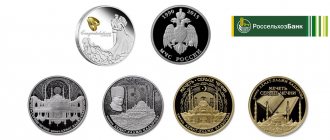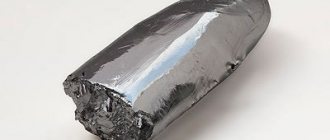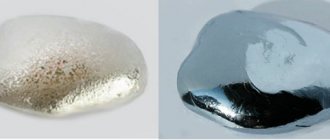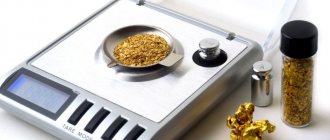The uncontrolled sale of precious minerals within the territorial borders of Russia or after their export abroad is an act that can undermine the stability of the market, lead to the depreciation of materials that represent the basis of the “gold” reserves of powers and cause fluctuations in exchange rates and depreciation of the money supply. To prevent this from happening, the extraction and sale of natural materials extracted from the subsoil that are of jewelry value is under the sole responsibility of the state and requires a specially issued permit (license) for the implementation of any related type of activity.
Any illegal manipulations with metals and stones classified as precious are highly profitable and therefore attractive to criminals who are subject to criminal prosecution and retribution for currency crimes.
Features of the crime
The specificity of qualifying operations with the precious contents of the earth's interior in the form of stones and metals lies in the admissibility of one or another action, determined by the type in which the materials in question are located. Thus, a cut diamond that has a marketable form can be transferred, sold, transported and is subject to all the variety of manipulations with it in the presence of a document confirming the purchase, in order to avoid accusations of misappropriation, and its native counterpart, which does not have polished edges, is subject to any action with it performed by an unlicensed entity is the subject of a crime.
A similar situation will occur in any operations with raw metals, which even the official trade can sell only if they are not in demand for the federal treasury as a replenishment of the “gold” reserve. Any, even insignificant amount of gold dust or nuggets in the hands of a private individual is fraught with prosecution and criminal liability for him, since an individual cannot be a subject allowed to handle metals and stones classified as precious.
Legislative conflicts make it possible to hold accountable in accordance with Article 191 of the Criminal Code of the Russian Federation even a person who, being aware of the content of platinum, silver or gold in the legs of radio components, desolders them from the circuit boards and separates the elements containing precious metals from the main part. Such a state of metals already transfers them from the state of a product or scrap, in which the part would have been located without losing its integrity and being in a working or faulty state, respectively, into the category of schlich, that is, unprocessed precious metal.
Now let's talk about the illegal trafficking of precious stones and metals from the point of view of the articles of the Criminal Code of the Russian Federation.
Legislation and statistics
To understand whether an act is a crime or not, when handling metals and stones classified as jewelry, you should clearly know what exactly falls under the qualifying definition of an item in the context of Article 191 of the Criminal Code of the Russian Federation, namely:
- Precious metals that are not allowed for free circulation include platinum and other metals with similar properties, gold and silver, found in the form of:
- nugget, that is, an alloy of a certain metal formed in the earth’s crust;
- industrially purified from impurities, chemically pure material;
- industrial raw materials, semi-finished products, artificial alloys, industrial products or waste products, chemical compounds and other forms;
- coins not circulating in a given historical period on the territory of existing world powers.
- Precious stones of natural origin are diamonds, sapphires, emeralds, alexandrites, and rubies, as well as unique amber formations and pearls.
In the text of Article 191, although pearls are highlighted separately, the Federal Law “On Precious Metals and Precious Stones” classifies them as organic precious stones, which, therefore, they are.
In order for a precious metal or stone not to be a reason for prosecution by law enforcement officials, it must be in one of the following improper states:
- For stones:
- be unsuitable for jewelry production;
- undergo cutting;
- to be raised as a human being.
- For metals and stones:
- be a piece of jewelry;
- relate to household products.
Thus, substandard precious metals stored in the form of a fused piece by a jeweler put him at risk of criminal punishment, and a ring rolled from the same material with a simple ornament, the application of which does not take much time, transforms any metal, even refined metal, that is, one that does not have impurities. and not classified as jewelry, as decoration, thereby removing it from the classification of the subject of a crime.
Composition of the crime and its types
In order to establish the commission of a crime subject to legal retribution under Article 191 of the Criminal Code of the Russian Federation, it is necessary to establish a combination of the following aspects:
- The object of the illegal act, which should be considered illegal trafficking, of metals, stones and pearls classified as precious. It will be illegal to manipulate stones and metals classified as precious and characterized by the following features:
- The presence of an object, which refers to stones and metals classified as precious and having the properties and characteristics discussed above. the relationship was formalized in violation of the regulated form for concluding such transactions;
- at least one of the parties to the transaction does not have the legal basis to participate in it;
- the relations of the parties are formalized in an appropriate manner, in compliance with the formal component, by a person authorized for this, but who has exceeded the scope of his official capabilities;
- The items of the concluded transaction were materials obtained illegally.
- Russian citizen;
The typology of illegal actions that are committed with metals or stones, including pearls, classified as precious, comes down to identifying varieties according to the stage of the life cycle of circulation of materials, namely:
- carrying out illegal transactions;
- unlawful possession;
- transportation or transfer carried out in violation of legal requirements.
Commentary on Article 191 of the Criminal Code of the Russian Federation
The object of the crime is the established procedure for the circulation of precious metals, natural precious stones or pearls.
The Russian Federation has established special rules for the circulation (civil circulation) of precious metals and stones. All actions performed with these values are strictly monitored and taken into account. This procedure is regulated by special regulatory legal acts <1>.
——————————— <1> See, for example: Federal Law of March 26, 1998 N 41-FZ “On Precious Metals and Precious Stones” // RG. 1998. April 7; Decree of the Government of the Russian Federation of June 30, 1994 N 756 “On approval of the Regulations on transactions with precious metals on the territory of the Russian Federation” // RG. 1994. July 9; Decree of the Government of the Russian Federation of September 28, 2000 N 731 “On approval of the Rules for accounting and storage of precious metals, precious stones and products made from them, as well as maintaining relevant reporting” // RG. 2000. Oct 20; Decree of the Government of the Russian Federation of December 1, 1998 N 1419 “On approval of the Procedure for carrying out transactions with mineral raw materials containing precious metals before refining” // RG. 1998. 11 Dec.
The subject of the crime is precious metals, natural precious stones, pearls.
According to Art. 1 of the Federal Law of March 26, 1998 N 41-FZ “On Precious Metals and Precious Stones” <1> Precious metals mean gold, silver, platinum and platinum group metals (palladium, iridium, rhodium, ruthenium and osmium). Precious metals can be in any condition, form, including native and refined form, as well as in raw materials, alloys, semi-finished products, industrial products, chemical compounds, jewelry and other products, coins, scrap and production and consumption waste.
——————————— <1> RG. 1998. April 7
Natural gemstones include diamonds, emeralds, rubies, sapphires and alexandrites. In accordance with the procedure established by the Government of the Russian Federation, unique amber formations are equated to precious stones <1>.
——————————— <1> Resolution of the Government of the Russian Federation of January 5, 1999 N 8 “On approval of the Procedure for classifying unique amber formations as precious stones” // RG. 1999. 22 Jan.
Pearls are a natural gemstone in any form and condition.
In accordance with the disposition of Art. 191 of the Criminal Code of the Russian Federation, the subject of this crime does not include jewelry and household products and scrap of such products <1>.
——————————— <1> On the concept of jewelry, see Order of Roskomdragmet of October 30, 1996 N 146 “On the procedure for classifying products containing precious metals as jewelry” // SPS GR.
The objective side of the crime is expressed in illegal actions related to precious metals, natural precious stones or pearls: 1) making a transaction; 2) storage; 3) transportation; 4) shipment.
Transactions (Article 153 of the Civil Code of the Russian Federation) include the purchase and sale of valuables, their exchange, donation, etc. Mining, sorting, processing, production and use of precious metals and precious stones are not transactions.
The storage of valuables refers to the actions of a person associated with their possession (for example, with oneself, at home, in a hiding place). Transportation is the movement of objects from one place to another by the culprit using any type of transport (for example, in a train, car, plane). Sending valuables is their movement to the addressee, without the direct participation of the sender (for example, in a parcel, letter, luggage).
The circulation of precious metals, natural precious stones or pearls is illegal if it is carried out in violation of the rules established by the legislation of the Russian Federation and regulating the procedure for the circulation of such items. For example, according to Art. 3 of the Federal Law of March 26, 1998 N 41-FZ “On Precious Metals and Precious Stones” in the Russian Federation there are exchanges of precious metals and precious stones intended for legal entities and individuals to carry out transactions related to the circulation of: standard and measured refined bullion precious metals; untreated precious stones that have been sorted; processed gemstones that have passed certification; nuggets of precious metals, etc. Consequently, the implementation of such transactions, in addition to exchange trading, is illegal (except for special cases established by law).
The elements of this crime are also formed by actions with valuables acquired in violation of the Criminal Code of the Russian Federation (for example, a person possesses precious metals and stones as a result of their illegal mining, theft, or taking a bribe).
An act related to transactions, transportation and transfer of valuables is completed at the moment of commission of any of these actions. Possession of these items is a continuing crime that is completed from the moment storage begins, regardless of its duration. The corpus delicti is formal.
If a person sells (exchanges, etc.) metals and stones under the guise of precious stones, which are not precious, then he is subject to liability for fraud (Article 159 of the Criminal Code of the Russian Federation).
An act related to the theft of valuables and associated with their further storage, transportation and forwarding must be qualified in conjunction with Art. 191 of the Criminal Code of the Russian Federation.
The implementation of illegal business activities related to the mining and production of precious metals and natural precious stones, and the subsequent commission of their illegal trafficking, if there are grounds, are classified as a set of crimes (Articles 171 and 191 of the Criminal Code of the Russian Federation).
The subjective side is characterized by guilt in the form of direct intent. The person is aware that he is trafficking in precious metals, natural gemstones or pearls and desires to do so.
The general subject of the crime is a sane individual who has reached the age of sixteen.
The qualifying feature is the commission of a crime on a large scale, by a group of persons by prior conspiracy (see Part 2 of Article 35 of the Criminal Code of the Russian Federation and the commentary thereto), or by an organized group (see Part 3 of Article 35 of the Criminal Code of the Russian Federation and the commentary thereto).
In accordance with the note to Art. 169 of the Criminal Code of the Russian Federation, large size means the cost of precious metals, natural precious stones or pearls exceeding two hundred and fifty thousand rubles.
When establishing the value of precious metals, precious stones and pearls, one should be guided by the prices for these metals and stones that existed at the time of illegal transactions with them, transportation or shipment, and in case of illegal storage - at the state when the act was stopped by the person himself or stopped by law enforcement agencies . In this case, purchase prices for non-ferrous metals are used, quoted daily by the Central Bank of the Russian Federation, and the cost of precious stones is determined on the basis of the conclusion of a gemological examination <1>.
——————————— <1> Volzhenkin B.V. Commentary on the Criminal Code of the Russian Federation / Ed. IN AND. Radchenko, A.S. Mikhlina. St. Petersburg, 2007.
Tactics for investigating illegal trafficking of precious metals
The priority when investigating illegal manipulations of stones and metals classified as precious is to identify their presence, which makes it possible to classify actions under the corresponding article. The absence of materials that are the subject of establishing the corpus delicti makes further investigative actions impossible.
When precious metals or stones are seized, they are analyzed to determine whether they can be classified as materials prohibited for circulation, without appropriately formalized procedures. If an assessment of the form of precious materials establishes that it is necessary to properly formalize transactions with them, then the owner is required to provide documents confirming the legality of the transaction.
Analysis of the transaction for legality is the last stage, the successful completion of which eliminates criminal prosecution, and otherwise, in case of non-compliance with any of the requirements of the laws on the circulation of precious metals and stones, punishment is inevitable.
The following video will tell you how the investigation into the case of illegal trafficking of precious stones took place:
Punishment and responsibility
Retribution for illegal manipulation of stones and metals considered precious, if major damage is recorded, that is, more than 1.5 million rubles, occurs, upon establishment of guilt, under Part 1 of Art. 191 of the Criminal Code of the Russian Federation and implies five years of forced labor or serving this term in prison, and the punishment can be supplemented by a fine, the amount of which is limited to 500 thousand rubles or income for 3 years.
With the group participation of criminal entities, the punishment is provided for in Part 2 of Article 191 of the Criminal Code of the Russian Federation and consists of:
- forced labor for a period limited to five years;
- a prison term that should not exceed 7 years.
Additionally, damage compensation may be awarded in the amount of up to 1 million rubles or income for 5 years.
Now let's look at some cases from judicial practice on the illegal trafficking of precious metals and stones.
What actions are illegal
If there are criminal penalties for illegal possession of silver and gold, does that mean that all owners of gemstone and metal jewelry are criminals?
Perhaps the rules of the law sometimes look strange, but they still need to be followed.
So what is illegal trafficking in precious metals, stones and pearls? And how to store gold without incurring criminal liability for it?
In order for stones to be legally stored, they must be in one of the following states:
- be unsuitable for jewelry processing;
- undergo primary processing, that is, cutting;
- to be raised by a human.
Therefore, in order for stones and metal to be legally kept in the home, they must be part of jewelry.
For example, if law enforcement agencies find fused pieces of precious metal in a jeweler’s workshop, the owner will face criminal liability. This is to be expected even if he has just made a blank for the production of the ring. But when the blank has managed to acquire some semblance of a ring with an ornament, there will be no complaints against the jeweler.
Illegal gold mining is the production of precious metal in any condition without the appropriate permit. If a person somewhere in the wilds of the taiga was caught with equipment for gold mining, this is not yet a crime. A violation of the law can only be recorded if the mined gold is discovered, which clearly belongs to this person.
The punishment for storing gold depends on the amount of precious metal, which corresponds to a certain amount of damage:
- in case of major damage (more than 1.5 million rubles), punishment is provided in the form of forced labor or imprisonment for up to 5 years, as well as a fine of up to 500 thousand rubles;
- in case of participation of several persons in a crime, punishment is provided in the form of forced labor for up to 5 years or a prison term of up to 7 years.
In any case, compensation for damage is awarded in accordance with the amount of precious metal mined and stored.
Arbitrage practice
Example 1. The Zamoskvoretsky District Court of Moscow found guilty a subject who sold 727.8 grams of various silver-containing parts of radio components, which he purchased in an unspecified place and transferred for a monetary reward to a figurehead who was an operational police officer who detained the criminal at the scene of the crime. transactions. Found guilty of transporting, storing and conducting transactions with illegally mined precious metal, the citizen was convicted under Part 1 of Article 191 and sentenced to a fine.
Example 2. Ostankino District Court of Moscow found guilt under Part 1. Art. 191 of a citizen who found two silver bars near the cinema and tried to sell them at a collection point for secondary precious metals, where he was caught by police officers who arrived on a signal from a buyer. Having awarded separate penalties for storing and carrying out an illegal transaction with precious metal, the court combined them, imposing a total of nine months of correctional labor and the deduction of 15% of earnings in the form of a fine transferred to the state.
Today, currency crimes are not limited only to the illegal circulation of precious metals and stones, they include money and card counterfeiting, excessive issue of securities, market manipulation and others. And the growth of such atrocities depends only on our honesty and consciousness.
The video below will tell you about another case of illegal trafficking in precious metals from judicial practice:










